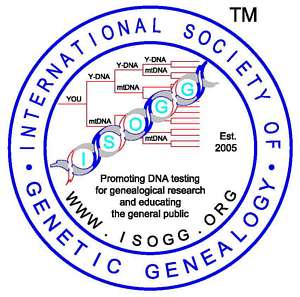Back to Y-DNA Tree Trunk
Back to SNP Index
Back to Papers Cited
Back to Glossary Back to Listing Criteria
Copyright 2007, International Society of Genetic Genealogy. All Rights Reserved.

| LINKS: Main Page Y-DNA Tree Trunk SNP Index Papers Cited Glossary Listing Criteria |
| CLADE/SUBCLADE SYMBOLS: Added Renamed |
| SNP SYMBOLS: Not on 2006 tree Confirmed within subclade Provisional Private |
D M174
�
D* -
�
D1 M15
�
D2 M55, M57, M64.1,
M179, P12, P37.1, M359.1/P41.1, 12f2.2
� �
D2* -
� �
D2a M116.1
� �
�
D2a* -
� �
�
D2a1 M125
� �
� �
D2a1* -
� �
� �
D2a1a P42
� �
� �
D2a1b P53.2
� �
�
D2a2 M151
�
D3 P47
NOTES:
Y-DNA haplogroup D is seen primarily in Central Asia, Southeast Asia, and in Japan. Sub-group D1 (D-M15) is seen in Tibet, Mongolia, Central Asia, and Southeast Asia, and the sub-groups D* (D-M174) and D3 (D-P47) are seen in Central Asia. The sub-group D2 (D-M55) is seen almost exclusively in Japan. The high frequency of haplogroup D in Tibet (about 50%) and in Japan (about 35%) implies some early migratory connection between these areas. Examination of the genetic diversity seen in sub-group D2 in Japan implies that this group has been isolated in Japan for between 12,000-20,000 years. The highest frequencies of D2 in Japan are seen among the Ainu and the Ryukyuans.
An isolated incidence of haplogroup D has also been seen in the Andaman Islands in the Indian Ocean. This implies that the group may once have had a much greater range, but has subsequently been displaced by more recent population events.
References:
Cruciani et al,
A Back Migration from Asia to Sub-Saharan Africa Is Supported
by High-Resolution Analysis of Human Y-Chromosome Haplotypes. (pdf)
American Journal of Human Genetics, 70:1197-1214, 2002.
Cruciani et al,
Phylogeographic Analysis
of Haplogroup E3b (E-M215) Y Chromosomes Reveals
Multiple Migratory Events Within and Out of Africa. (pdf) American Journal of Human Genetics,
74:1014-1022, 2004.
Deng et al, Evolution
and Migration History of the Chinese Population Inferred from the Chinese Y-chromosome Evidence.
(pdf) Journal of Human Genetics, 49:339-348, 2004.
Hammer et al,
Dual Origins of the Japanese: Common Ground for Hunter-gatherer and Farmer Y Chromosomes.
(abstract) Journal of Human Genetics, 51:47-58, 2006.
Karafet et al,
Paternal Population History of East Asia: Sources, Patterns,
and Microevolutionary Processes. (pdf) American Journal of Human Genetics,
69:615-628, 2001.
Sengupta et al,
Polarity and Temporality of High Resolution Y-chromosome Distributions in India
Identify Both Indigenous and Exogenous Expansions and Reveal Minor Genetic Influence
of Central Asian Pastoralists. (pdf)
American Journal of Human Genetics, 78:202-221, 2006.
Su et al,
Y-chromosome Evidence for a Northward Migration of Modern Humans into Eastern Asia
during the Last Ice Age, (pdf), American Journal of Human Genetics, 65:1718-1724, 1999.
Thangaraj et al,
Genetic Affinities of the Andaman Islanders, a Vanishing Human Population. (pdf)
Current Biology, 13:86-93, 2003.
Corrections/Additions made since 20 December 2006:
Contact Person for Haplogroup D: Alice Fairhurst
| Back to Main Page Back to Y-DNA Tree Trunk Back to SNP Index Back to Papers Cited Back to Glossary Back to Listing Criteria Copyright 2007, International Society of Genetic Genealogy. All Rights Reserved. |

|